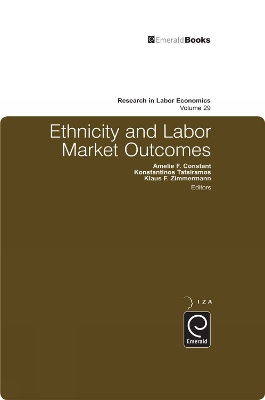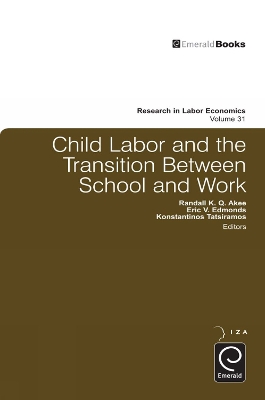Research in Labor Economics
2 primary works
Book 29
Ethnicity and Labor Market Outcomes
by Amelie F. Constant, Konstantinos Tatsiramos, and Klaus F. Zimmermann
Published 1 January 2009
How immigrants and their descendants fare in the host society and in particular in the labor market is a very important question. While differences among ethnicities have been found to be marked and persistent within many host countries, and while the labor market consequences of diversity have been recognized, they have not been sufficiently examined. This volume contains fresh knowledge to help better understand the complex relationship between ethnic or minority groups, the role of ethnic identity and their disparate economic performance; 12 papers that individually and collectively go to the heart of this question. Offering a new paradigm, they tackle and interlink four important themes of immigrants' integration: ethnic identity, citizenship, interethnic marriages, and immigrant entrepreneurship. These papers offer insights and answers to challenging questions for six different immigration countries while they study countless different ethnic and immigrant groups. It is the aim of this volume to bring the role of ethnic identity in the forefront of scientific and political discussion and provide a link among these themes, anticipating new trends and directions in this area. An anthology of these questions is: Does ethnic identity affect the employment and earnings of immigrant groups and in what way? Does dual nationality affect assimilation? To what extent do social interactions determine the employment outcomes of ethnic minorities? Why do Mexican-Americans exhibit low self-employment rates? Which are the factors that influence the composition of the workforce in terms of ethnic-background? Do interethnic marriages influence transitions into and out of ethnic self-employment? And, are interethnic marriages a guarantee to high human capital achievement of their offsprings?
Book 31
Child Labor and the Transition Between School and Work
by Randall K.Q. Akee, Eric V. Edmonds, and Konstantinos Tatsiramos
Published 1 January 2010
More than 190 million children under 15 are working in the world today. Academic and policy research on child labor and related questions about how children spend their time in low income countries has boomed in recent years. This volume contains fresh knowledge to help better understand the relationship between child labor and the transition between school and work. It contains 11 original research papers by authors from Africa, Asia, Latin America as well as the United States and Europe. These papers offer insights and answers to issues such as: how to measure child labor; how the returns to education in the adult labor market affect children's school enrollment; how cash transfer programs affect schooling and children's participation in market and non-market activities; how child labor and schooling affect health; why children participate in activities that are labeled worst forms of child labor; how children's time is allocated along gender lines; what role local labor demand plays in shaping the work and schooling decisions of children; and, how many hours of work can be undertaken before negative effects on school attendance are observed.

